Living in a hot climate doesn’t mean you have to sacrifice a beautiful garden. In fact, there are plenty of heat-resistant plants that not only survive but thrive in high temperatures, intense sunlight, and dry conditions. These hardy plants are perfect for sizzling summers and can add a splash of color and texture to your garden without requiring constant attention or excessive watering.
Whether you’re looking to fill your garden with vibrant flowers, drought-tolerant shrubs, or edible plants, there are plenty of options that can withstand the heat while offering low maintenance and year-round beauty. By choosing the right plants for your environment, you can create a stunning outdoor space that flourishes no matter how hot it gets.
In this article, we’ll highlight 17 heat-resistant plants that will thrive in hot climates, helping you create a vibrant, water-efficient garden even in the toughest conditions.
Aloe Vera
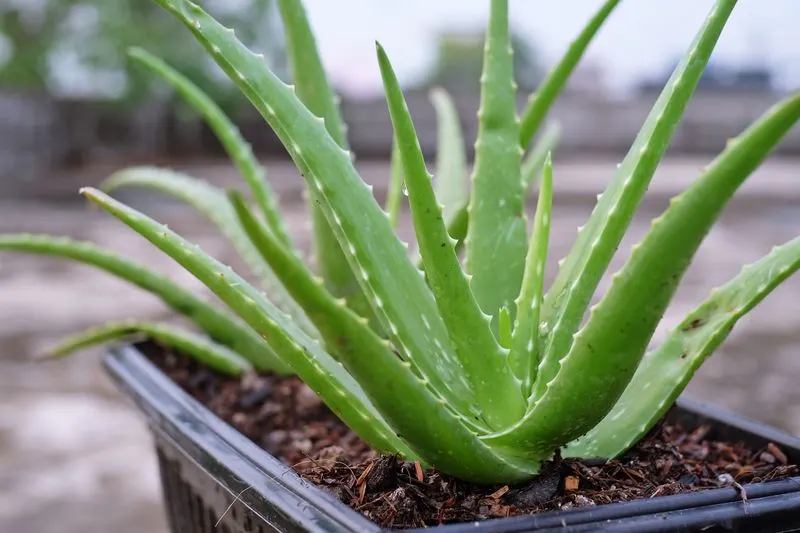
Aloe Vera’s thick, fleshy leaves are not just a visual delight; they are adept at storing water, making it an excellent choice for arid regions. This plant is remarkably low maintenance, requiring minimal watering once established. Its healing properties add an extra layer of appeal, as the gel inside its leaves is known for treating minor burns and skin irritations. Place Aloe Vera in well-draining soil, and it will flourish under full sun, maintaining its vibrant green hue. It’s an ideal companion for those looking to cultivate a low-effort, high-reward garden.
Agave
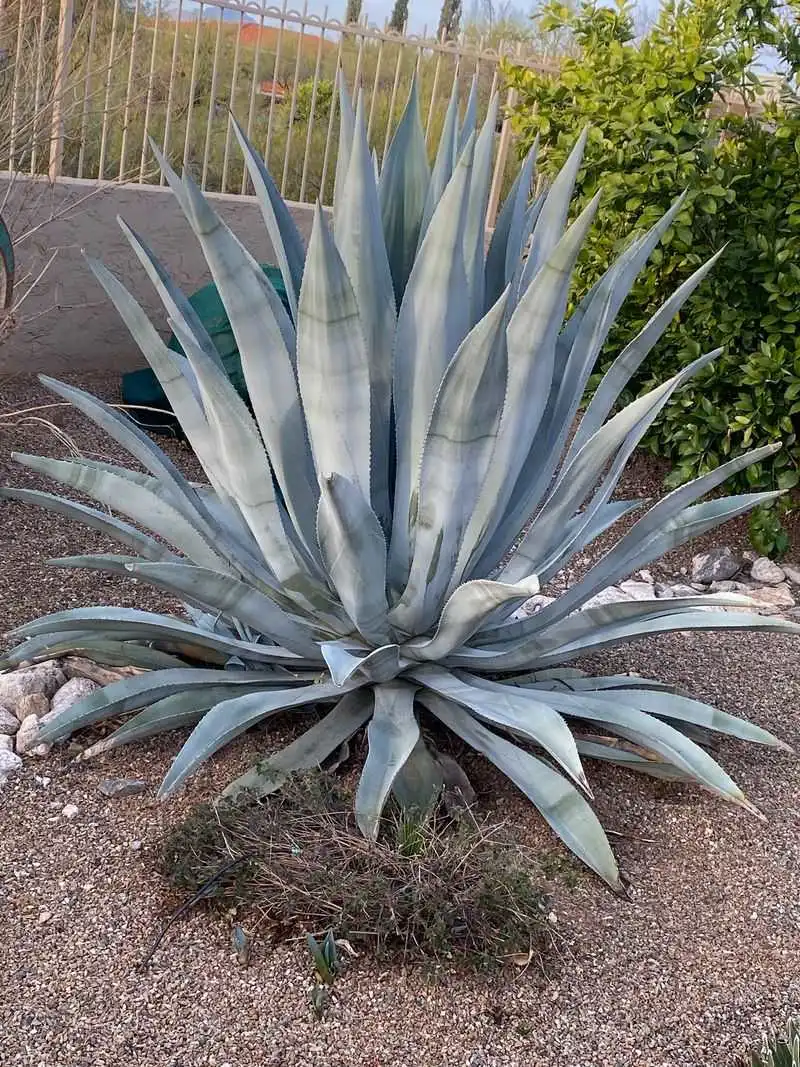
Agave’s architectural structure and striking appearance make it a standout in any garden. Its thick leaves form a rosette pattern, perfect for adding a touch of the exotic to your outdoor space. This plant thrives in full sun and well-drained soil, where it can grow impressively large over time. Agave is also known for its drought tolerance, surviving with minimal water. It’s essential to handle it with care, as the sharp leaf tips can be hazardous. Despite this, Agave’s unique shape and resilience make it a worthy addition to heat-prone gardens.
Lavender
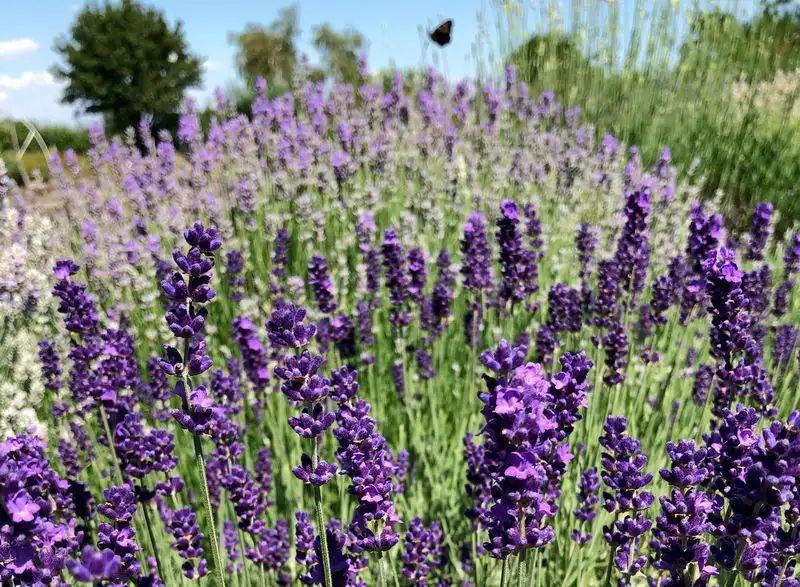
Lavender is cherished not only for its soothing fragrance but also for its ability to thrive in hot, dry climates. The plant’s silvery foliage and vibrant purple flowers create a visual contrast that adds beauty and diversity to gardens. Lavender requires well-drained soil and plenty of sunlight to flourish, and once established, it becomes highly drought-tolerant. Cutting the flowers regularly encourages more blooms and prolongs the flowering season. This plant is a favorite among gardeners seeking both aesthetic appeal and functionality, as its flowers can be used in various crafts and culinary dishes.
Cacti
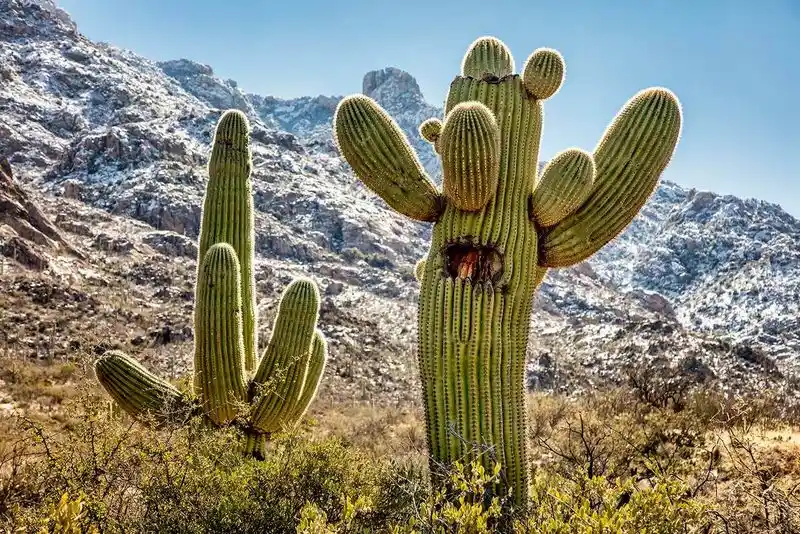
Cacti are quintessentially associated with arid environments, drawing admiration for their unique forms and survival mechanisms. These plants have adapted to extreme heat through water-storing tissues and protective spines. They come in a multitude of shapes and sizes, making them versatile for different garden designs. While they need very little water, ensuring good drainage is crucial to prevent root rot. Cacti can be striking centerpieces in gardens or used sparingly for accent. Their resilience and distinctive look make them a perennial favorite for those who cherish low-maintenance greenery.
Lantana
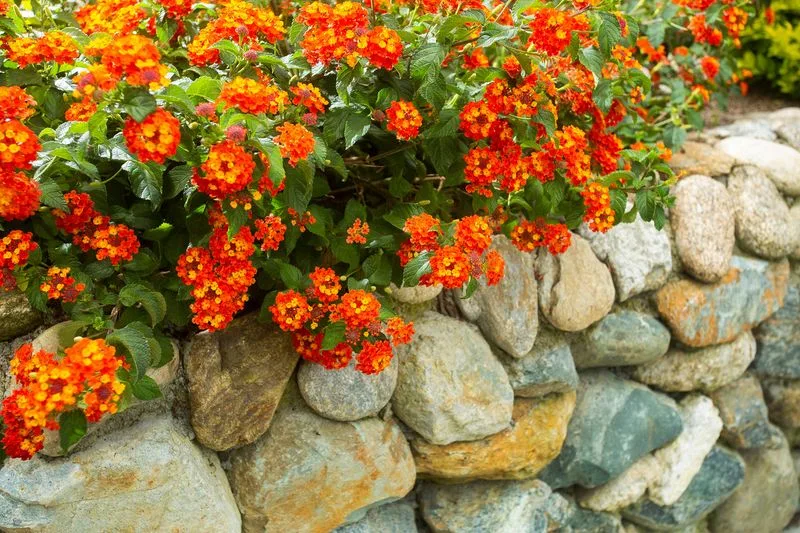
Lantana is a vibrant, colorful plant that excels in reflecting the sunniness of its environment. Its clusters of small, multicolored flowers attract butterflies, adding to its charm. This plant thrives in full sun and well-draining soil, and once established, it’s both drought-tolerant and easy to maintain. Lantana’s ability to bloom continuously throughout the warmer months makes it a favorite for gardeners wanting consistent color. Regular pruning helps to maintain its shape and encourages more prolific flowering. With its bright blooms and hardiness, Lantana serves as a vivacious addition to any garden.
Bougainvillea
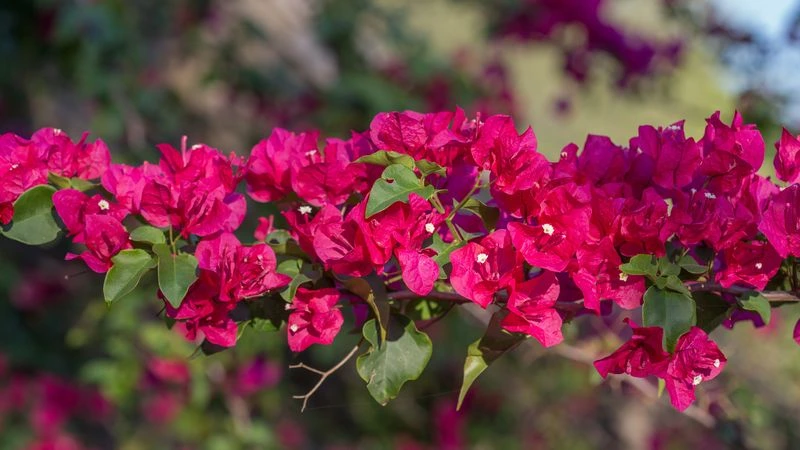
Bougainvillea is renowned for its spectacular display of bright, papery bracts, often mistaken for flowers. This vigorous climber flourishes in warm climates, where it can cover walls and trellises with ease. Providing it with full sun and well-draining soil ensures the best growth and flowering. Bougainvillea is drought-resistant once established, making it a practical choice for dry regions. Its vibrant colors add a striking element to any garden, perfect for those looking to create a focal point. However, its thorns require careful handling during pruning and maintenance.
Oleander
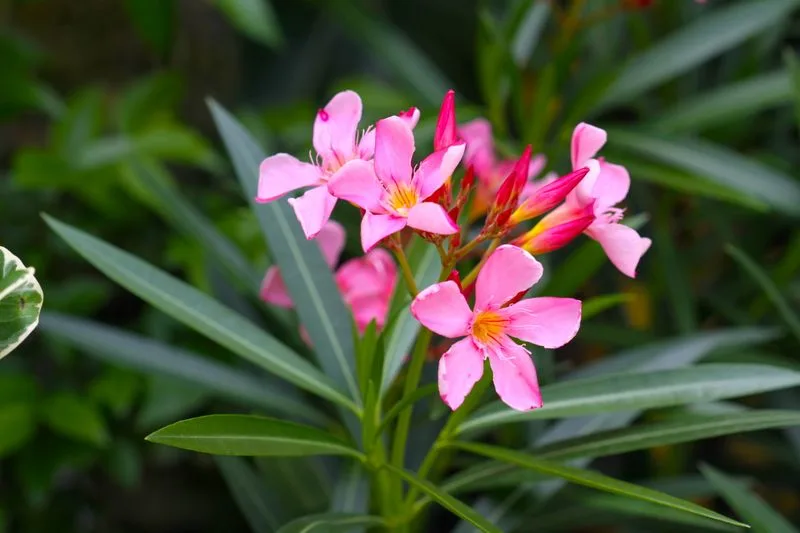
Oleander is a resilient shrub known for its lush green leaves and clusters of bright flowers. Its ability to withstand intense heat makes it perfect for hot climates. Oleander blooms profusely with minimal care, provided it’s grown in sunny locations with well-draining soil. Although all parts of the plant are toxic if ingested, its beauty and low maintenance requirements make it a popular choice for ornamental gardens. It’s particularly useful as a privacy screen or a decorative hedge. Regular pruning keeps it tidy and encourages a robust flowering display each season.
Sedum
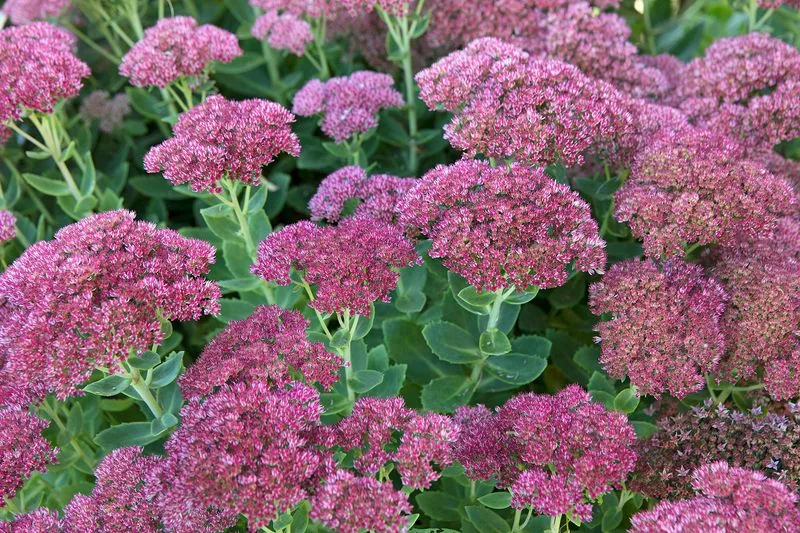
Sedum, commonly known as stonecrop, is celebrated for its succulent leaves and star-shaped flowers. This plant thrives in full sun and poor, rocky soil, making it ideal for rock gardens and containers. Sedum’s ability to tolerate drought and neglect further enhances its appeal to busy gardeners. The plant’s creeping nature allows it to fill spaces quickly, providing excellent ground cover. When in bloom, its flowers attract beneficial pollinators, adding life to your garden. Sedum’s versatility and resilience make it a staple for those looking to create a thriving garden with minimal effort.
Gazania

Gazania, also known as treasure flower, is admired for its vivid blooms that open under the sun. These flowers close at night and during cloudy weather, adding an element of dynamism to the garden. Gazania thrives in full sunlight and tolerates poor, dry soils, making it a hardy choice for challenging conditions. Its daisy-like blooms attract pollinators, adding ecological value to the garden. Regular deadheading encourages continuous flowering throughout the hot months. With its bright colors and resilience, Gazania is ideal for gardeners wanting a splash of color with minimal upkeep.
Yarrow

Yarrow is a versatile perennial that brings both beauty and practicality to gardens located in hot climates. Its feathery foliage and clusters of tiny flowers can withstand prolonged sun exposure and poor soil conditions. Yarrow is not only drought-tolerant but also useful in companion planting to deter pests. It attracts beneficial insects like ladybugs and hoverflies, promoting a healthy garden ecosystem. Regular trimming encourages compact growth and prevents it from becoming invasive. With its adaptability and ecological benefits, Yarrow is a wise choice for those prioritizing sustainability in their gardening endeavors.
Rosemary
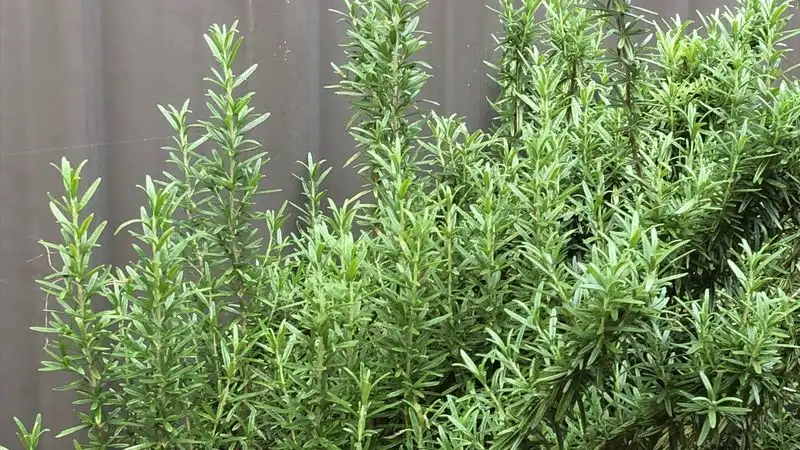
Rosemary is a fragrant herb that thrives in hot, dry climates, making it a valuable addition to both culinary and decorative gardens. Its needle-like foliage releases a refreshing aroma, while the small purple flowers attract pollinators. Rosemary requires full sun and well-drained soil to flourish, and its drought tolerance means less frequent watering is needed. This plant can be pruned into shapes, allowing it to serve as both a functional and aesthetic element in the garden. Rosemary’s resilience and versatility make it a favorite among those who enjoy both gardening and cooking.
Zinnia
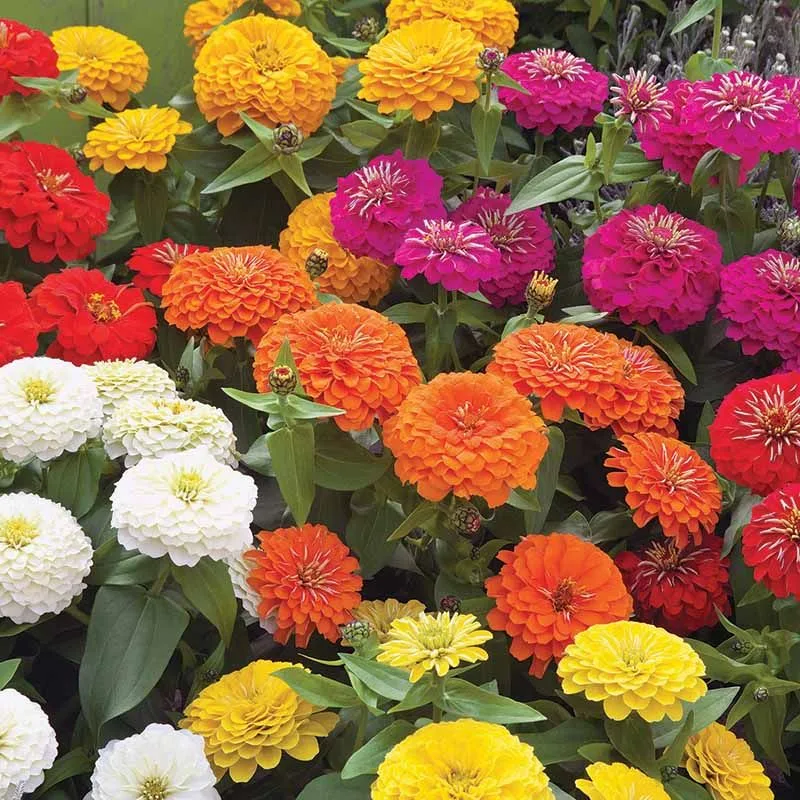
Zinnia is a flowering plant that is celebrated for its vibrant, multi-colored blooms and ability to thrive in intense sunlight. Once established, these flowers require little care and are drought-tolerant. Zinnias are excellent for attracting pollinators, such as butterflies, to the garden, enhancing its ecological value. Regular deadheading encourages more prolific blooming, keeping gardens colorful throughout the summer. Zinnias are also resistant to many common pests, making them a practical choice for those looking to minimize chemical use. Their cheerful appearance and hardiness make Zinnias a beloved choice for gardeners.
Portulaca
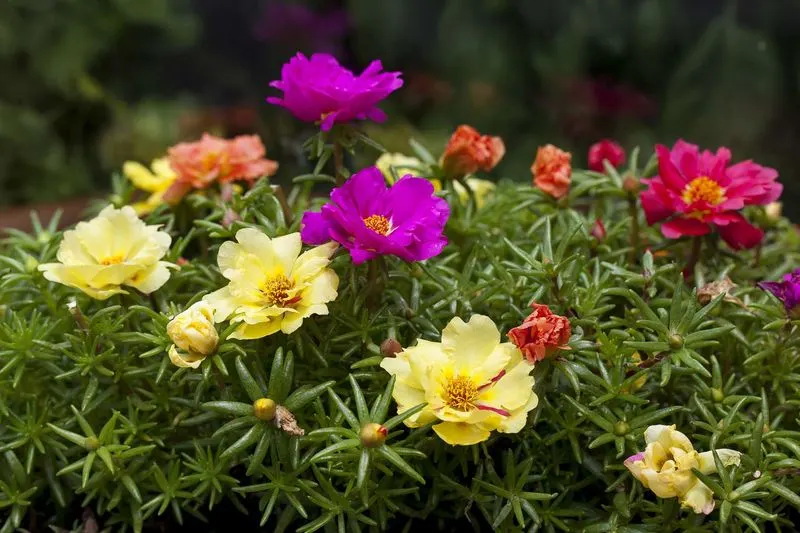
Portulaca, commonly known as moss rose, is a low-growing succulent that offers a profusion of colorful blooms. This plant thrives in hot, sunny environments and requires minimal water, making it an excellent choice for xeriscaping. Portulaca’s blooms open with the sun and close at night, adding a dynamic visual element to gardens. Its ability to grow in sandy, poor soil makes it versatile for various garden settings. With its vibrant flowers and minimal care requirements, Portulaca is perfect for gardeners seeking to add color and texture to their landscape without extensive maintenance.
Euphorbia

Euphorbia is a diverse genus of plants known for their varied forms and resilience to harsh conditions. These plants often have unique structural features, like spiny or succulent stems, which help them conserve water. Euphorbia thrives in full sun and well-draining soil, making it a suitable choice for dry climates. Its bright yellow or greenish flowers add a touch of color, while the plant itself serves as an architectural focal point in gardens. Despite its beauty, caution is advised, as Euphorbia’s milky sap can irritate skin. Its adaptability and striking appearance make it a valuable garden addition.
Thyme
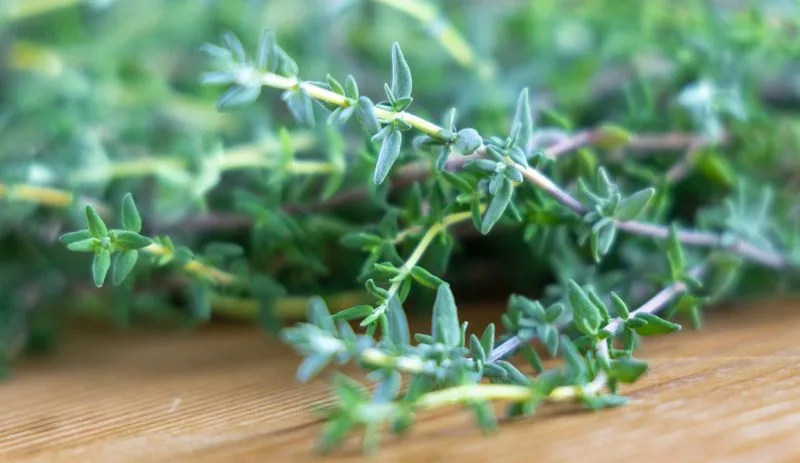
Thyme is a hardy herb that thrives in hot, dry conditions, often found in Mediterranean gardens. Its small, aromatic leaves are useful in cooking and attract beneficial insects when flowering. Thyme prefers full sun and well-drained soil, requiring little water once established, making it an ideal choice for xeriscaping. The plant’s low-growing habit makes it suitable as ground cover or for filling gaps between stones. Regular harvesting encourages bushier growth and maintains its aromatic quality. With its culinary uses and resilience, thyme is a versatile addition to gardens focused on sustainability and flavor.
Yucca
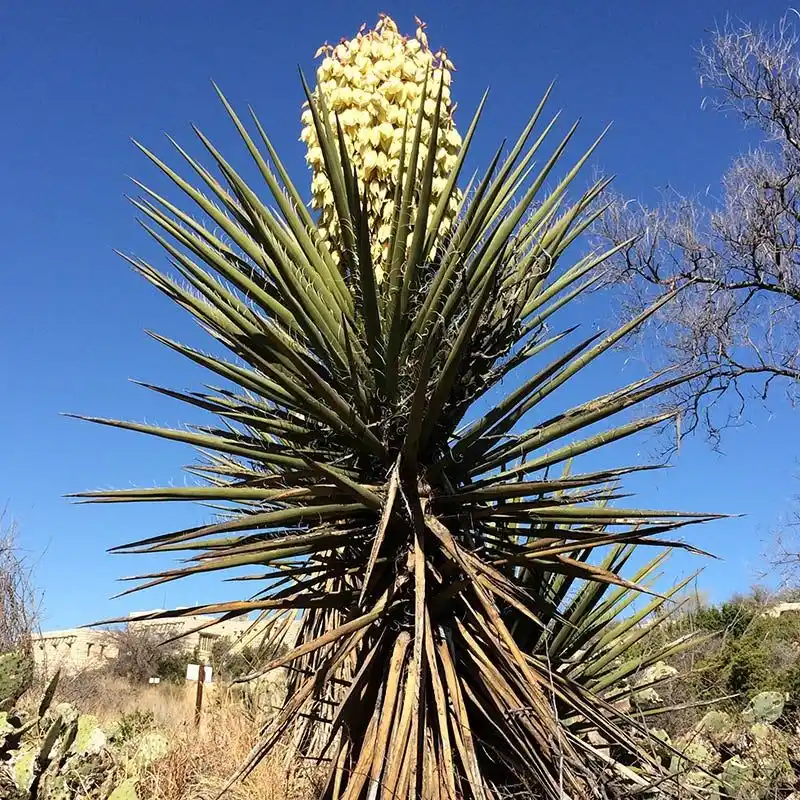
Yucca is known for its dramatic, sword-like leaves and ability to withstand extreme heat and dry conditions. This plant adds a bold architectural element to any garden landscape, thriving in full sun and sandy or rocky soil. Yucca’s resilience means it requires minimal watering once established, making it a practical choice for low-maintenance gardens. It can also serve as an effective barrier or accent plant. While its sharp leaves require careful handling, the plant’s striking form and durability make it a standout choice for gardeners looking to create a distinct visual impact.
Madagascar Periwinkle

The Madagascar Periwinkle is a remarkable survivor in harsh climates. Its vibrant pink and white flowers add a splash of color, even in the hottest, driest regions. Known scientifically as Catharanthus roseus, this plant thrives where others wilt.
Its resilience comes from an ability to store water efficiently, making it perfect for xeriscaping. Planting this in your garden ensures not only beauty but also minimal water usage.
For those seeking a hardy yet elegant plant, the Madagascar Periwinkle is a perfect choice, offering both aesthetic appeal and ecological benefits. Its ability to adapt to extreme heat makes it a true garden ally.

